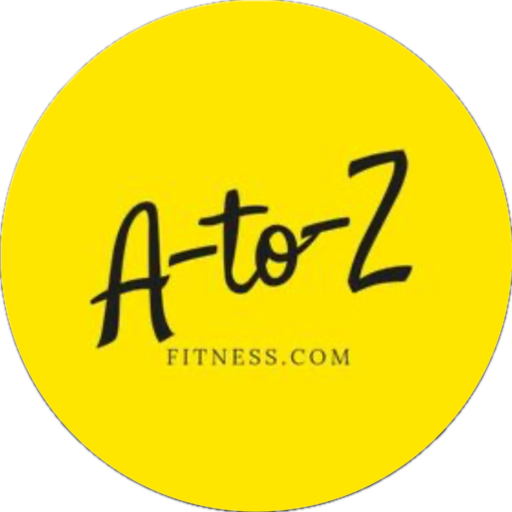
Spider veins on the face can be a cosmetic concern for many individuals. These tiny, visible blood vessels that appear close to the skin’s surface can affect your self-confidence and make you feel self-conscious. Luckily, there are effective methods available to remove spider veins on face and restore a smooth, flawless complexion. In this article, we will explore various treatments for spider vein removal, providing you with the knowledge to make informed decisions and regain your confidence. Whether you’re dealing with small clusters or widespread spider veins, read on to discover the best solutions that can help you achieve clear and beautiful skin once again.
Understanding Spider Veins on Face :
Spider veins, also known as telangiectasias, are small, dilated blood vessels that appear close to the skin’s surface, resembling spider webs or branches. While they can occur on various parts of the body, including the legs and chest, spider veins on the face are particularly noticeable due to their visibility. They often appear as thin, red or blue lines on the cheeks, nose, chin, or around the eyes.
Causes and Risk Factors :
Understanding the causes and risk factors associated with spider veins on the face can help you take proactive measures to prevent their occurrence or minimize their appearance. Spider veins can develop due to a combination of genetic, environmental, and lifestyle factors. Some common causes and risk factors include:
- Genetics: A family history of spider veins can increase your chances of developing them.
- Hormonal changes: Fluctuations in hormone levels, such as those experienced during pregnancy or menopause, can contribute to the development of spider veins.
- Sun exposure: Prolonged exposure to ultraviolet (UV) radiation can weaken the skin’s collagen and elastin, leading to the formation of spider veins.
- Aging: As we age, our blood vessels naturally become weaker, making them more prone to dilation and visible spider veins.
- Rosacea: Individuals with rosacea, a skin condition characterized by redness and flushing, may be more susceptible to developing spider veins on the face.
Prevention Tips to Reduce Spider Veins :
While complete prevention of spider veins may not be possible, adopting certain habits and lifestyle changes can help minimize their appearance and reduce the risk of developing new ones. Here are some preventive measures you can take:
- Protect your skin from the sun: Apply sunscreen with a high SPF, wear protective clothing, and limit sun exposure, especially during peak hours.
- Exercise regularly: Engaging in regular physical activity can improve blood circulation and promote overall vascular health.
- Maintain a healthy weight: Excess weight can put additional pressure on blood vessels, increasing the risk of spider veins.
- Elevate your legs: If you spend long periods sitting or standing, elevate your legs to reduce pressure on the veins.
Non-Invasive Treatments for Spider Veins Removal :

Fortunately, there are several non-invasive treatment options available to effectively remove spider veins on the face. These treatments are minimally invasive, require little to no downtime, and can provide noticeable results. Here are three popular non-invasive treatments:
a. Laser Treatment: Laser treatment, also known as laser therapy or laser ablation, is a commonly used method for spider vein removal. It involves directing a focused beam of light onto the affected area, which targets the pigments in the blood vessels, causing them to heat up and collapse. The collapsed veins are eventually absorbed by the body, leading to their disappearance. Laser treatment is precise, safe, and usually requires multiple sessions for optimal results.
b. Intense Pulsed Light (IPL) Therapy: Intense Pulsed Light (IPL) therapy is another effective non-invasive treatment option for spider vein removal. This treatment utilizes high-intensity pulses of light to target and heat the spider veins, causing them to break down. Similar to laser treatment, IPL therapy prompts the body to absorb the treated veins, resulting in their gradual disappearance. IPL therapy is particularly beneficial for individuals with fair skin tones and superficial spider veins.
c. Sclerotherapy: Sclerotherapy is a non-invasive treatment that involves injecting a specialized solution directly into the spider veins. The solution irritates the lining of the veins, causing them to collapse and stick together. Over time, the treated veins are reabsorbed by the body, and the blood flow is rerouted to healthier veins. Sclerotherapy is highly effective for small to medium-sized spider veins and may require multiple sessions for optimal results.
Surgical Options for Spider Veins Removal :
In some cases, surgical intervention may be necessary for the removal of spider veins on the face. These procedures are typically recommended for larger or more severe spider veins that have not responded to non-invasive treatments. Here are two common surgical options:
a. Microphlebectomy: Microphlebectomy, also known as ambulatory phlebectomy or stab avulsion, is a surgical procedure used to remove larger spider veins. It involves making tiny incisions over the affected area and using a special hook-like instrument to extract the veins. Microphlebectomy is performed under local anesthesia and leaves minimal scarring. It offers immediate results and a relatively short recovery period.
b. Endovenous Laser Treatment (EVLT): Endovenous Laser Treatment (EVLT) is a minimally invasive surgical procedure used to treat larger spider veins and underlying venous insufficiency. During the procedure, a laser fiber is inserted into the affected vein through a small incision. The laser emits heat, causing the vein to collapse and seal shut. The treated vein eventually gets absorbed by the body, improving both the cosmetic appearance and overall venous function. EVLT is performed under local anesthesia, and most individuals can resume normal activities shortly after the procedure.
Post-Treatment Care and Recovery :

After undergoing spider vein removal treatments, it is essential to follow proper post-treatment care instructions to ensure optimal results and minimize complications. Here are some general post-treatment care guidelines:
- Avoid direct sun exposure: Protect your skin from the sun and use sunscreen with a high SPF to prevent damage to the treated area.
- Follow your healthcare provider’s instructions: Adhere to any specific aftercare instructions provided by your healthcare provider, including the use of prescribed topical creams or medications.
- Avoid vigorous exercise: Refrain from engaging in strenuous activities or heavy lifting for the recommended recovery period to allow proper healing and minimize the risk of complications.
- Keep the treated area clean: Gently cleanse the treated area with a mild cleanser and avoid scrubbing or using harsh skincare products that may irritate the skin.
- Wear compression garments if advised: Depending on the type of treatment received, your healthcare provider may recommend wearing compression garments or stockings to promote blood circulation and reduce swelling.
- Stay hydrated: Drink an adequate amount of water to maintain hydration, which can aid in the healing process.
- Follow a healthy lifestyle: Adopting a healthy lifestyle, including a balanced diet and regular exercise, can promote overall skin health and vascular function.
It’s important to note that post-treatment care instructions may vary depending on the specific treatment received and individual circumstances. Always consult with your healthcare provider for personalized advice and guidance.
Home Remedies and Lifestyle Changes :
While professional treatments offer the most effective and targeted approach to spider vein removal, certain home remedies and lifestyle changes may help complement these treatments and improve overall vascular health. Here are some suggestions:
- Maintain a healthy diet: Consume a diet rich in fruits, vegetables, whole grains, and lean proteins. These foods provide essential nutrients that support skin health and blood vessel integrity.
- Exercise regularly: Engage in regular physical activity, such as walking, swimming, or cycling, to improve blood circulation and strengthen blood vessels.
- Elevate your legs: If you experience prolonged periods of sitting or standing, elevate your legs to reduce pressure on the veins and improve blood flow.
- Avoid excessive heat exposure: Avoid hot baths, saunas, and hot tubs, as excessive heat can dilate blood vessels and worsen spider veins.
- Practice proper skincare: Avoid using harsh skincare products and opt for gentle cleansers and moisturizers. Protect your skin from sun damage by wearing sunscreen and hats.
- Manage stress: Chronic stress can impact blood vessel health. Incorporate stress management techniques such as meditation, deep breathing exercises, or yoga into your routine.
While these lifestyle changes and home remedies may not eliminate spider veins completely, they can contribute to better overall vascular health and minimize the appearance of new spider veins.
Embracing Your Skin: Self-Acceptance and Confidence :

Spider veins on the face can have a significant impact on self-esteem and body image. It’s essential to remember that everyone’s skin is unique, and imperfections are a normal part of being human. While seeking treatment for spider veins can help improve their appearance, it’s equally important to cultivate self-acceptance and embrace your natural beauty.
Developing a positive body image involves acknowledging and appreciating your body as it is. Surround yourself with a supportive network of friends and family who value you for who you are, beyond any physical appearance. Engage in activities that make you feel confident and empowered, focusing on your strengths and accomplishments.
Remember that beauty comes in many forms, and self-confidence radiates from within. Treatments for spider vein removal can provide a boost to your self-esteem, but true beauty lies in accepting yourself and embracing your uniqueness.
Spider veins on the face need not be a permanent concern. With the wide range of treatment options available today, you can effectively reduce or eliminate spider veins and restore your confidence. Whether you opt for non-invasive treatments like laser therapy and IPL, or choose surgical interventions such as microphlebectomy or EVLT, consult with a qualified healthcare provider to determine the most suitable approach for your specific needs.





